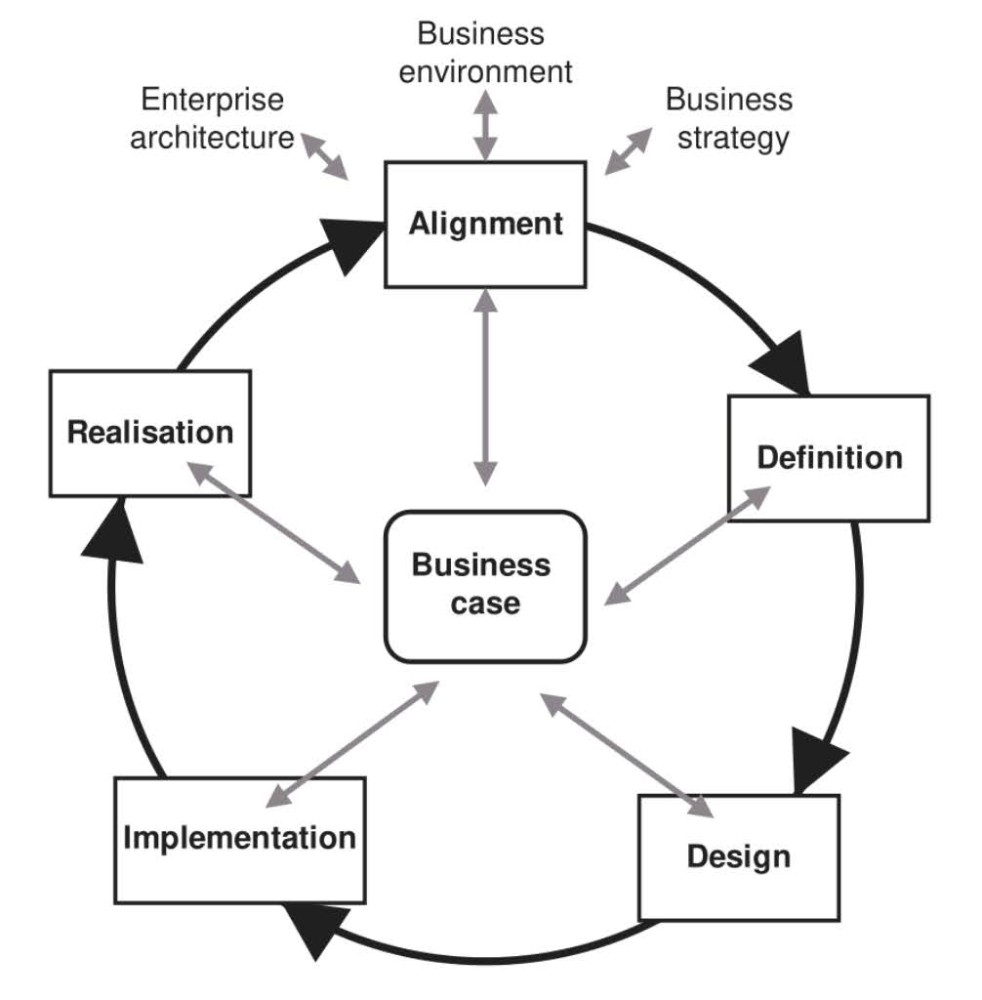The business change life cycle
by Etienne Pretorius

The business change life cycle is a process that outlines the steps involved in implementing changes to an organization, from initiation to closure. It typically includes the following stages: initiation, planning, execution, monitoring and control, and closure. The purpose of the business change life cycle is to ensure that changes are properly planned, executed, and managed to minimize risk and achieve desired outcomes.

The alignment of initiatives business change when using the business change life cycle refers to ensuring that the objectives and goals of the change initiative align with the overall strategy and vision of the business. This involves considering the impact of the change on various stakeholders and ensuring that the change is in line with the values and culture of the organization. The life cycle helps to ensure that the change is planned and executed in a structured and systematic manner, taking into account the different stages of planning, implementation, and evaluation, and ensuring that the initiatives are aligned with the overall goals and objectives of the organization.
Advantages and drawbacks when using the business change life cycle to assess alignment of business change proposals?
Advantages:
Systematic Approach: The business change life cycle provides a systematic approach to assessing and managing changes in a business. This helps ensure that changes are consistent, predictable and aligned with the overall goals and objectives of the organization.
Improved Alignment: The life cycle helps assess the alignment of business change proposals with the current business strategy and objectives. This improves the chances of success of the proposed change and ensures that it is aligned with the overall goals of the organization.
Better Communication: The life cycle provides a clear and structured framework for communicating and documenting the proposed change. This helps improve collaboration and communication among stakeholders and ensures that everyone is on the same page.
Increased Awareness: The life cycle helps raise awareness about the proposed change and its impact on the organization. This helps stakeholders understand the implications of the change and provides a platform for feedback and input.
Drawbacks:
Time Consuming: The business change life cycle can be time-consuming and requires significant effort from all stakeholders involved. This can be a challenge for organizations with limited resources or a fast-paced work environment.
Inflexibility: The life cycle can be inflexible and may not be able to accommodate unexpected or unforeseen events. This can limit the ability of the organization to respond to changes in a timely and effective manner.
Complexity: The life cycle can be complex and difficult to understand for those unfamiliar with change management processes. This can create confusion and misunderstandings among stakeholders and slow down the implementation of the proposed change.
Resistance to Change: The life cycle may increase resistance to change as stakeholders are made aware of the proposed change and its impact on the organization. This can create challenges in gaining support and buy-in from stakeholders.
Referencing: ChatGPT Jan 9 Version.
